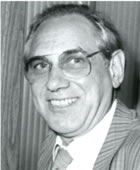Dr. med.
D. Griebner
Consultant
I am pleased to report on our experiences with the use of Medical Resonance Therapy Music® on our obstetrics unit.
We have been using Medical Resonance Therapy Music® in three areas of obstetrics or in the obstetrics field since approx September 1994.
- The Delivery Room
Here, women are mainly informed about the possibility of musical accompaniment, who are brought into the delivery room to attempt an induction as a result of premature commencement of birth (cervix approx. 3 cm, or due to the premature bursting of the amniotic sac. Approx. 50% of the women approached take advantage of our offer with regard to Medical Resonance Therapy Music®, if they have not already brought their own music.
From the start, half of the women take a negative view towards this musical accompaniment, even if they had never tried it before. Almost nobody trying musical accompaniment breaks it off within a short period of time. However, we observe quite frequently that, after interrupting the music at the end of the opening phase, a renewed start of musical accompaniment during a later phase of birth, particularly the expulsion phase, is no longer requested. At present, the percentage of musical accompaniment lies at approx. 30% of all births. - Perinatal Unit
Here, musical accompaniment is used, above all, for female patients with prolonged intravenous tocolysis. The percentage of music patients have brought along with them is here clearly higher than in the delivery room. In this respect, special observations were made: in one patient under intravenous tocolysis, we could observe in the tocogram, after switching on the musical accom- paniment with Medical Resonance Therapy Music®, the regular appearance of Alvarez waves, which promptly disappeared again after switching off the music. - Advice to Pregnant Women /
Ultrasound Consultation Hours
Here, Medical Resonance Therapy Music® playing in the background mean-while belongs to standard procedures, and is widely accepted by the expectant mothers.
- Both, in the delivery room and in the field of perinatal medicine, we have the impression that the musical accompaniment of Medical Resonance Therapy Music® triggers off a greater calmness in a large percentage of women, lessens the troublesome side-effects of intravenous tocolysis, induces an improved coming to terms with pain, and generally improves the women’s emotional stability. Used as room music, Medical Resonance Therapy Music® can have an “undesired side-effect”. Thus, some of our colleagues and midwives tell us that the influence of music makes them tired. This also underlines the clear effectiveness, and the use of headphones for the patients will easily put things right.

Dr. med. D. Griebner
Consultant

